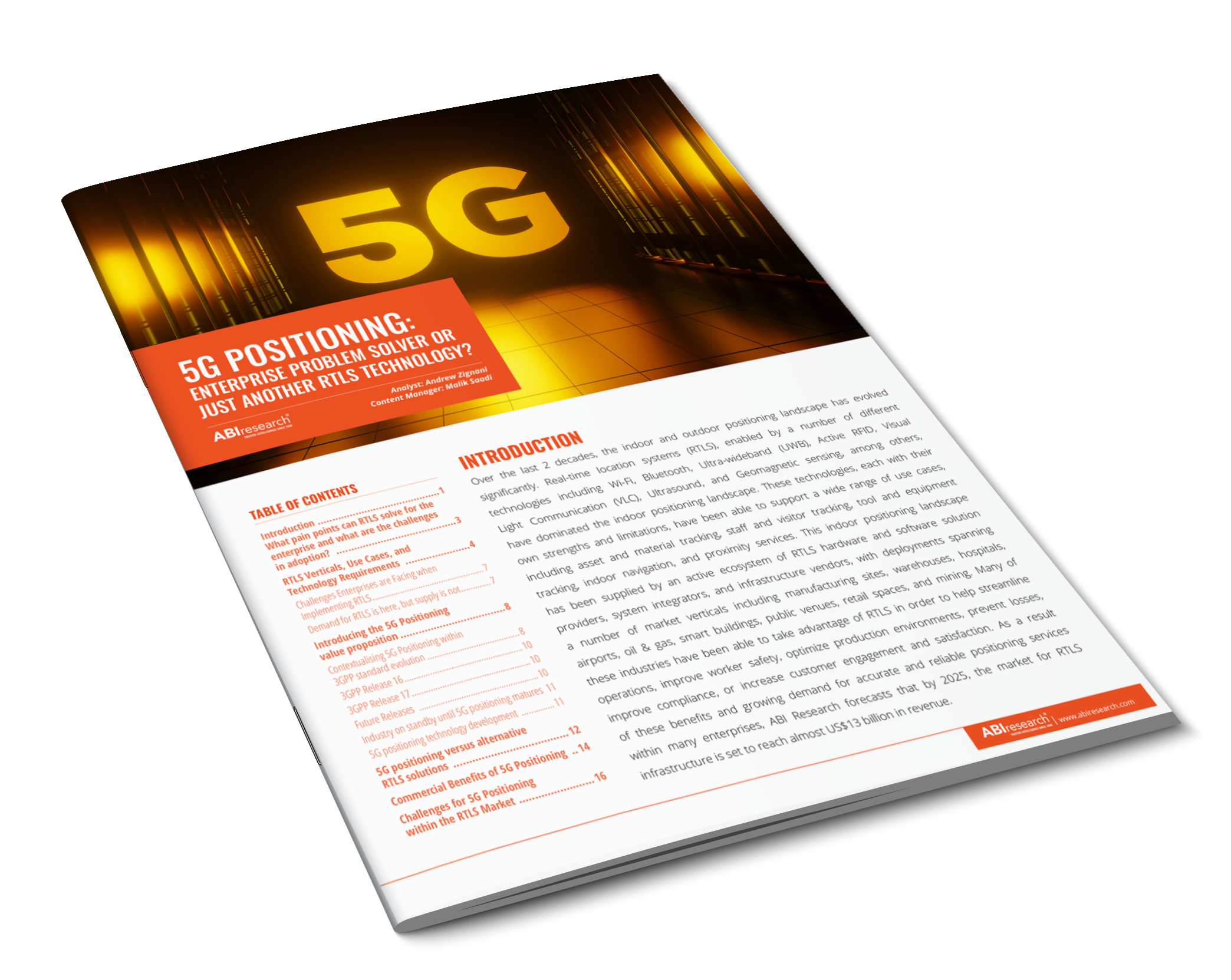Over the last 2 decades, the indoor and outdoor positioning landscape has evolved significantly. Real-time location systems (RTLS), enabled by a number of different technologies including Wi-Fi, Bluetooth, Ultra-wideband (UWB), Active RFID, Visual Light Communication (VLC), Ultrasound, and Geomagnetic sensing, among others, have dominated the indoor positioning landscape.
These technologies, each with their own strengths and limitations, have been able to support a wide range of use cases, including asset and material tracking, staff and visitor tracking, tool and equipment tracking, indoor navigation, and proximity services.
This indoor positioning landscape has been supplied by an active ecosystem of RTLS hardware and software solution providers, system integrators, and infrastructure vendors, with deployments spanning a number of market verticals including manufacturing sites, warehouses, hospitals, airports, oil & gas, smart buildings, public venues, retail spaces, and mining.
Many of these industries have been able to take advantage of RTLS in order to help streamline operations, improve worker safety, optimize production environments, prevent losses, improve compliance, or increase customer engagement and satisfaction. As a result of these benefits and growing demand for accurate and reliable positioning services within many enterprises, ABI Research forecasts that by 2025, the market for RTLS infrastructure is set to reach almost US$13 billion in revenue.
Download our whitepaper to learn more.

